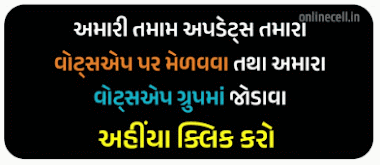Best Eye Test Mobile App: In today's digital age, maintaining good eye health has become more important than ever. With the increased use of screens and devices, our eyes are under constant strain, making regular eye tests essential for ensuring optimal vision and eye health. This comprehensive guide will provide you with all the information you need to understand the importance of eye tests, the various types available, and how to perform them correctly.
Importance of Eye Tests
Early Detection of Eye Problems
An eye test is crucial for detecting any potential vision
problems or eye disorders, such as myopia (near-sightedness), hyperopia
(farsightedness), astigmatism, or presbyopia (age-related farsightedness).
Early detection allows for timely treatment, which can help prevent further
deterioration of vision and maintain good eye health.
Overall, Health Assessment
An eye test can also reveal signs of chronic diseases or
health conditions, such as diabetes, high blood pressure, and even brain
tumors. The blood vessels and nerves in the eyes can provide valuable
information about your overall health, making eye tests an essential part of
your regular health check-ups.
Monitoring Changes in Vision
Regular eye tests enable you to track any changes in your
vision over time, allowing for necessary adjustments to your prescription
glasses or contact lenses. This ensures that you always have the correct
eyewear to maintain optimal vision and eye comfort.
Types of Eye Tests
There are several types of eye tests, each designed to
assess specific aspects of your vision and eye health. Some of the most common
eye tests include:
Visual Acuity Test
The visual acuity test measures the sharpness of your vision
by assessing your ability to identify letters or symbols on a standardized eye
chart. This is the most common type of eye test and is usually the starting
point for any eye examination.
Refraction Test
A refraction test helps determine the prescription for your
glasses or contact lenses by measuring how light bends as it passes through
your eye. This test is performed using a phoropter, a device that contains
various lenses of different strengths, which are switched in front of your eyes
to determine the optimal lens power for your vision.
Color Vision Test
This test evaluates your ability to distinguish between
different colors and can help detect color vision deficiencies, such as color
blindness.
Ocular Motility Test
The ocular motility test assesses the movement and
coordination of your eyes, ensuring that they can work together to track
objects and maintain focus effectively.
Depth Perception Test
This test evaluates your ability to perceive the distance
and spatial relationship between objects, ensuring that you have a good sense
of depth perception.
Performing an Eye Test
Proper Distance and Screen Size
To perform an eye test correctly, it's essential to maintain
the appropriate distance between the subject and the screen. The recommended
distances are:
- 7 feet from a 20” screen;
- 5 feet from a 17” screen;
- 3 feet from a 12” screen;
- 2 feet from a 13” screen.
Test With or Without Glasses
Eye tests can be performed with or without glasses,
depending on the purpose of the test. If you're testing for visual acuity or
updating your eyewear prescription, you should wear your glasses during the
test. However, if you're testing for color vision or depth perception, you may
be asked to remove your glasses.
One Eye at a Time
When performing an eye test, it's important to test one eye
at a time. Cover your left eye with your left hand, ensuring that you do not
apply pressure to the eyelid. Read the letters or symbols on the screen,
starting from the top and working your way down. Repeat the process with your
right eye.
Strong Central Visual Acuity
If you can read the letters or symbols easily with both your
left and right eye, chances are you have strong central visual acuity. However,
if you're unable to read all the lines or see certain colors, it's essential to
consult an optometrist for a comprehensive eye exam.
Comprehensive Eye Exam by an Optometrist
Although self-administered eye tests can provide valuable
information about your vision, they should not replace a comprehensive eye exam
by an optometrist. An optometrist can assess various aspects of your vision,
eye health, and overall health, providing a proper diagnostic and recommended
course of action.
Frequency of Eye Exams
The frequency of eye exams varies depending on your age,
risk factors, and any existing vision or health problems. As a general
guideline:
- Children should have their first eye exam between 6 months and 1 year of age, followed by another exam at 3 years and then before starting school.
- Adults aged 18 to 60 should have an eye exam every two years.
- Adults over 60 should have an eye exam annually.
Individuals with certain risk factors, such as a family history of eye diseases, diabetes, or high blood pressure, may require more frequent eye exams.
Download Eye Test Application: Click Here
Conclusion
Regular eye tests are crucial for maintaining good vision
and eye health, as well as detecting any potential problems early on. Whether
you're performing a simple eye test at home or undergoing a comprehensive eye
exam by an optometrist, it's essential to stay proactive about your eye health.
By understanding the importance of eye tests and the various types available,
you can ensure that you're taking the necessary steps to maintain optimal
vision and overall well-being.




